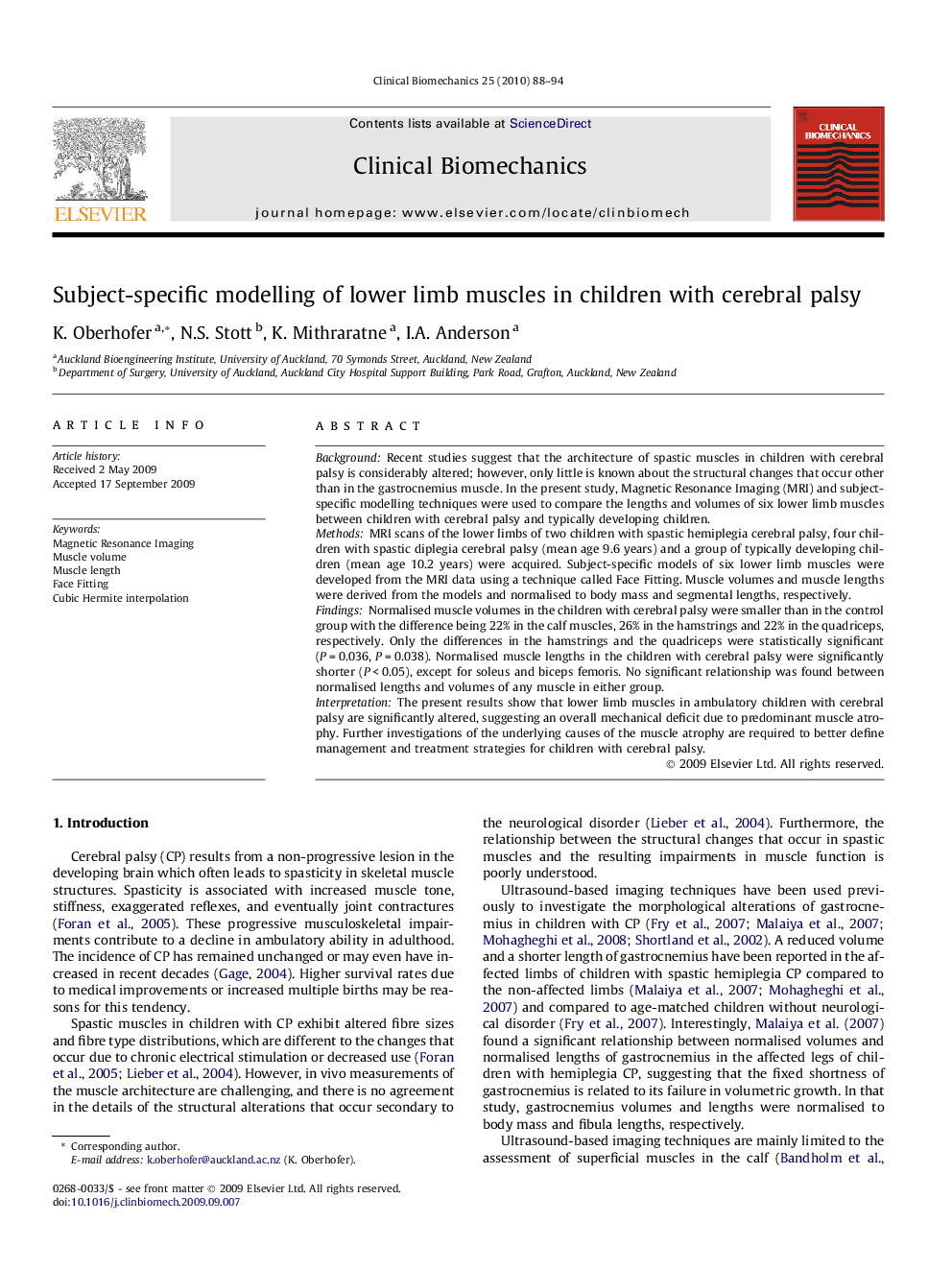| Article ID | Journal | Published Year | Pages | File Type |
|---|---|---|---|---|
| 4051155 | Clinical Biomechanics | 2010 | 7 Pages |
BackgroundRecent studies suggest that the architecture of spastic muscles in children with cerebral palsy is considerably altered; however, only little is known about the structural changes that occur other than in the gastrocnemius muscle. In the present study, Magnetic Resonance Imaging (MRI) and subject-specific modelling techniques were used to compare the lengths and volumes of six lower limb muscles between children with cerebral palsy and typically developing children.MethodsMRI scans of the lower limbs of two children with spastic hemiplegia cerebral palsy, four children with spastic diplegia cerebral palsy (mean age 9.6 years) and a group of typically developing children (mean age 10.2 years) were acquired. Subject-specific models of six lower limb muscles were developed from the MRI data using a technique called Face Fitting. Muscle volumes and muscle lengths were derived from the models and normalised to body mass and segmental lengths, respectively.FindingsNormalised muscle volumes in the children with cerebral palsy were smaller than in the control group with the difference being 22% in the calf muscles, 26% in the hamstrings and 22% in the quadriceps, respectively. Only the differences in the hamstrings and the quadriceps were statistically significant (P = 0.036, P = 0.038). Normalised muscle lengths in the children with cerebral palsy were significantly shorter (P < 0.05), except for soleus and biceps femoris. No significant relationship was found between normalised lengths and volumes of any muscle in either group.InterpretationThe present results show that lower limb muscles in ambulatory children with cerebral palsy are significantly altered, suggesting an overall mechanical deficit due to predominant muscle atrophy. Further investigations of the underlying causes of the muscle atrophy are required to better define management and treatment strategies for children with cerebral palsy.
